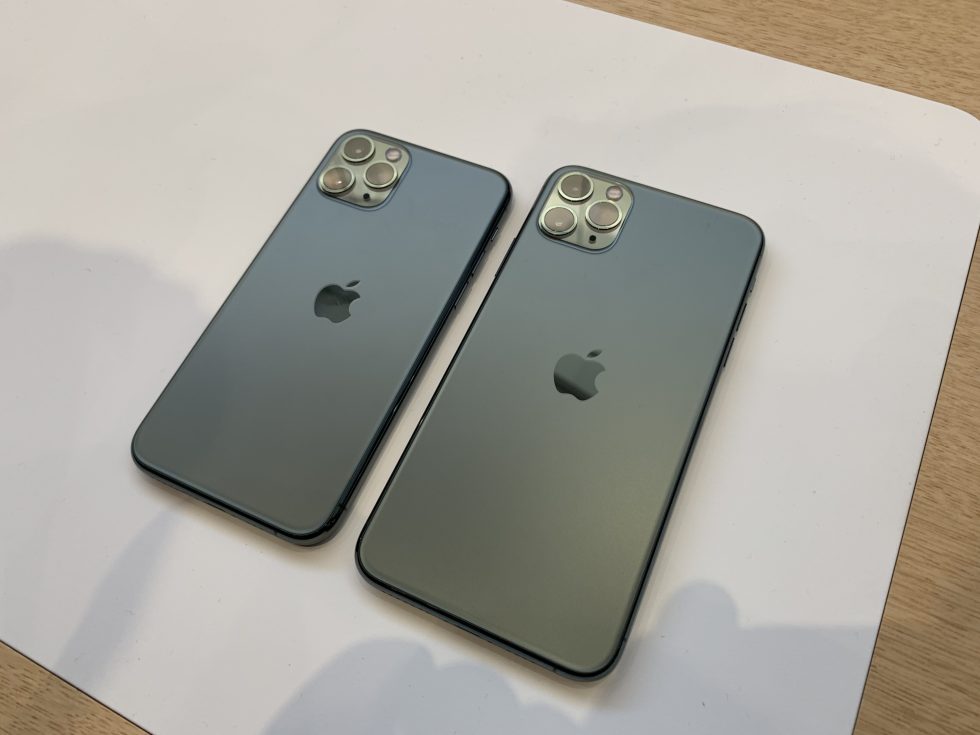

The most obvious addition to the iPhone 12 Pro here is a LiDAR scanner, which makes it easier for the iPhone to figure out depth information. iPhone 12 Pro vs iPhone 11 Pro cameraĪpple has improved the iPhone 12’s camera hardware only a little over the iPhone 11 Pro.īoth are triple-camera affairs, with what seems to be the same three 12-megapixel sensors covering wide, ultrawide, and 2X telephoto angles.

Given that Apple introduced its own 120Hz ProMotion display technology in the 2017 iPad Pro, such a feature feels increasingly overdue on the iPhone Pro range. Both are stuck at 60Hz, which results in a scrolling motion that’s half as fluid as rival phones such as the Samsung Galaxy S20 and the OnePlus 8 Pro. Our one big criticism of both screens is that they lack a higher refresh rate. In fact, we named the iPhone 12 Pro display as “one of the best out there” in our review, thanks to “deep blacks, vivid whites and a vast range of colors”. Both displays are punchy, bright and beautifully balanced, showing off HDR-enhanced media content very well indeed. This inherent similarity isn’t a massive disappointment in itself. Both handsets get precisely as bright as one another (800 nits typical, 1200 nits peak), and have a very similar pixel density of around 460ppi. Otherwise, the iPhone 12 Pro shares the same Super Retina XDR OLED screen technology as its immediate forebear. At 6.1 inches, the 12 Pro screen is bigger by 0.3 inches, despite the fact that the chassis is no larger. The main difference between the iPhone 12 Pro and iPhone 11 Pro displays comes down to size. In terms of how it feels in the hand, we found the sharp edges of the iPhone 12 Pro makes it less comfortable to hold than the iPhone 11 Pro, but far easier when it comes to accessing and pressing the buttons. It will survive a longer spell immersed in water, too, despite the two phones sharing the same IP68 rating. That new right-angled approach will apparently make the back twice as resistant to drops – although it’s still glass, and as such prone to cracking, as our reviewer discovered. Together with those square edges, it feels like an altogether flatter phone.Īpple has added a ‘nano-crystalline’ Ceramic Shield to the front of the iPhone 12 Pro, which makes its screen four times stronger than that of the iPhone 11 Pro. The two Pros are of almost identical weight, but the iPhone 12 Pro is 0.7mm thinner than its predecessor. The curved edges of the iPhone 11 Pro have been squared off, and the edges sharpened to an 90-degree point, much like the iPhone 5.

We weren’t massively sold on this asymmetrical blister at the time, but it’s grown on us a little since – possibly because the iPhone 12 Pro features something very similar.īy contrast, the iPhone 12 Pro is something of a breath of fresh air, even if it takes its cues from a pre-iPhone X era. The iPhone 14 Pro sticks with Lightning.The iPhone 11 Pro saw Apple debuting its triple camera module, too, which certainly caught the eye. The iPhone 15 Pro also introduces USB-C charging for the first time, which gives you 10Gbps transfer speeds. They're both 6.1-inch OLED panels with 1,600 nits of brightness and up to 2,000 nits in sunlight, as well as always-on modes and 120Hz refresh rates. Otherwise, the displays on the iPhone 15 Pro vs iPhone 14 Pro are very similar. It's not a dramatic difference, but the iPhone 15 Pro has narrower bezels around the display, which makes video and other content pop more. You can also customize the Action Button via the Shortcuts app. Replacing the mute switch, you can silence calls with a long press, but you can also use it to launch the camera, flashlight, magnifier feature, voice recorder and more. The other big iPhone 15 Pro vs iPhone 14 Pro difference is the addition of the Action button on the new iPhone. Seriously, the iPhone 15 Pro weighs just 6.6 ounces, down from 7.3 ounces on the iPhone 14 Pro. The iPhone 15 Pro looks quite different from the iPhone 14 Pro, and it starts with a stronger yet lighter titanium design.


 0 kommentar(er)
0 kommentar(er)
